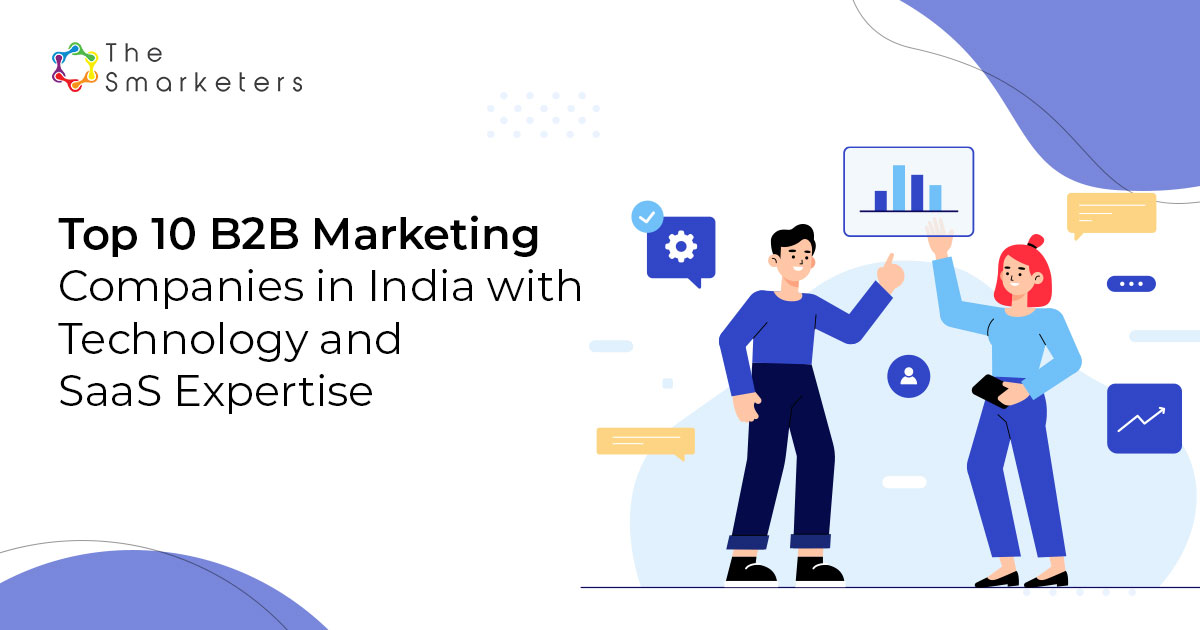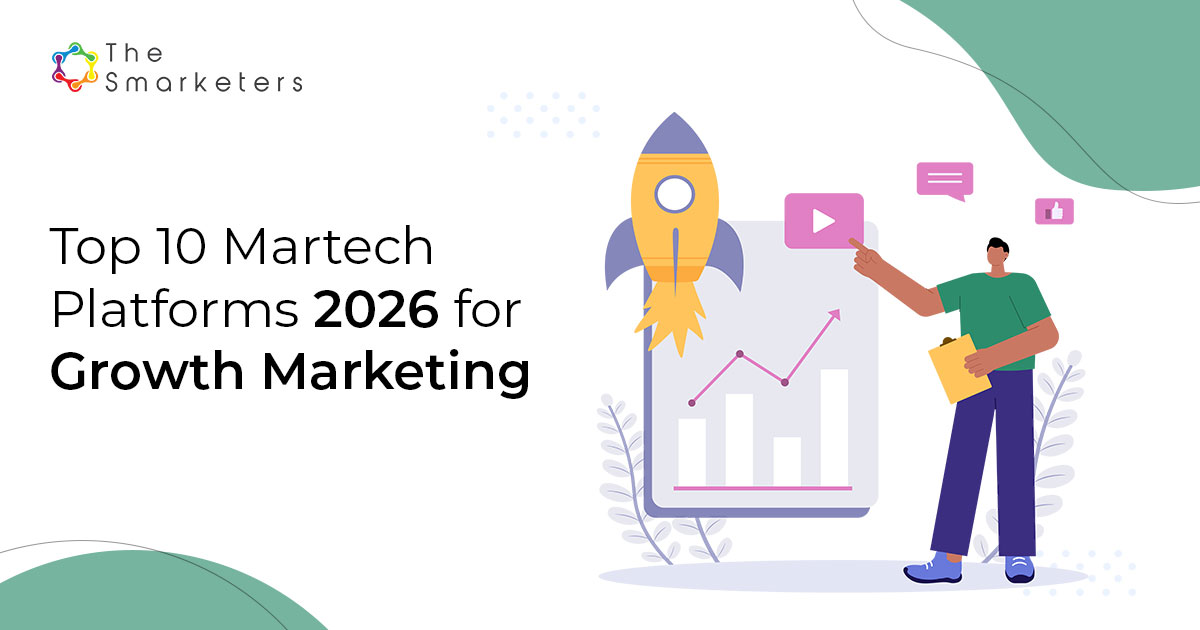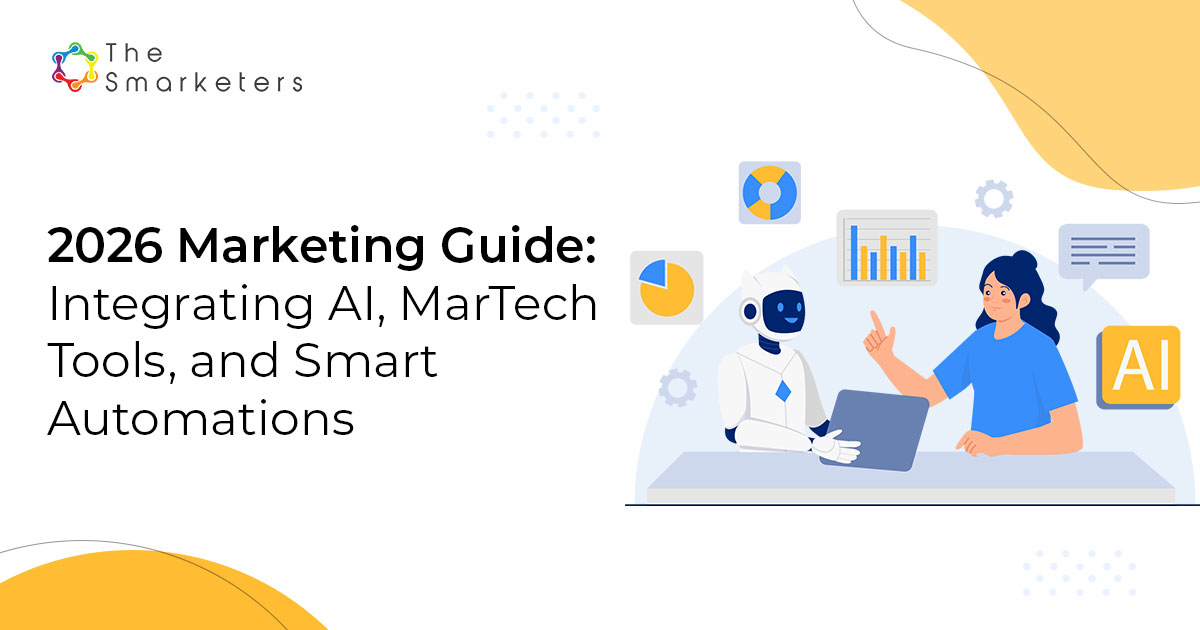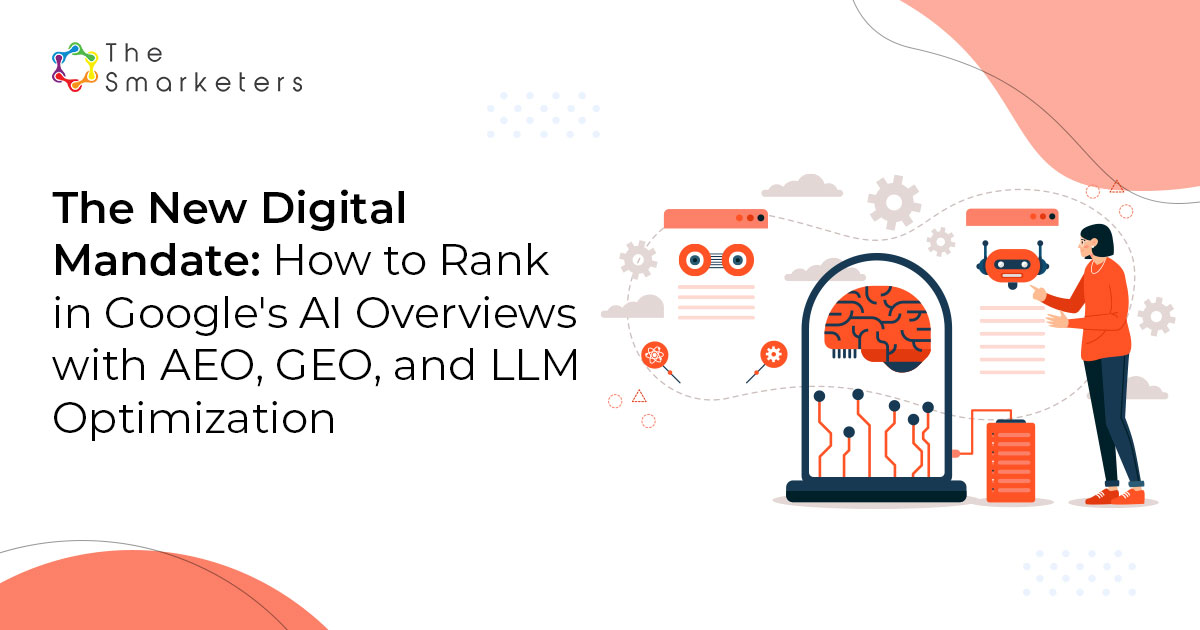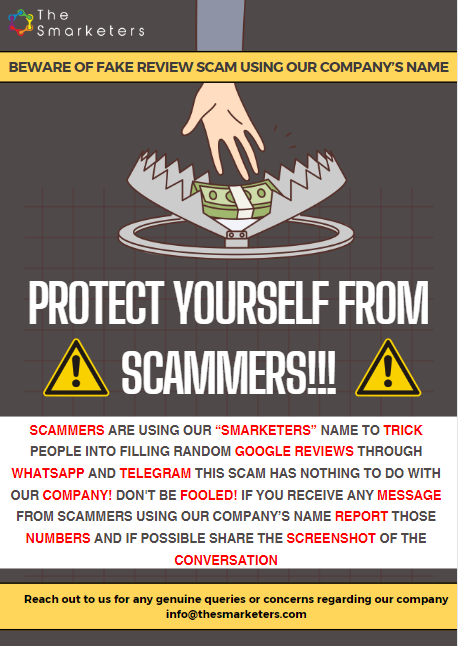Table of Contents
- Understanding Account Based Marketing in Life Sciences
- Identifying and Prioritizing Target Accounts
- Tailoring Content for Life Science Decision-Makers
- Multichannel Engagement Strategies
- Measuring ABM Success in Life Sciences
- Overcoming Challenges in Life Science ABM
- Technology Stack for Effective ABM in Life Sciences
- FAQs
- Top 10 B2B Marketing Companies in India with Technology and SaaS Expertise
- Top 10 ABM Companies in India: Your Complete Guide to Finding the Right Partner in 2026
- Guide: How to find the right ABM agency for your organization?
- The Smarketers Wins Double Recognition at 16th Annual Web Excellence Awards
- Beyond the Buzz : How ABM AI Integration is Redefining B2B Marketing in 2025
Did you know that the global life sciences market is projected to reach $2.2 trillion by 2028? With such massive growth, it’s no wonder that pharmaceutical and biotech companies are seeking innovative ways to stand out in a crowded marketplace. Enter Account Based Marketing (ABM) – a game-changing strategy that’s revolutionizing B2B marketing in the life sciences industry.
While traditional marketing casts a wide net, ABM takes a laser-focused approach, targeting high-value accounts with personalized campaigns. Leading life sciences companies are already reaping the benefits of ABM, with some reporting up to 200% increases in engagement rates and 20% boosts in deal sizes. But how exactly does ABM work in the complex world of life sciences, and how can your company leverage this powerful strategy?
In this comprehensive guide, we’ll dive deep into the world of Account Based Marketing for the life sciences industry. From identifying your ideal target accounts to crafting compelling content that resonates with decision-makers, we’ll cover everything you need to know to implement a successful ABM strategy. Get ready to discover the secrets behind multichannel engagement, measuring success, overcoming industry-specific challenges, and building the perfect tech stack for your ABM efforts. Let’s unlock the potential of ABM in life sciences!
Understanding Account Based Marketing in Life Sciences

A. Definition and key principles
Account Based Marketing (ABM) in life sciences is a strategic approach that focuses on targeting high-value accounts with personalized marketing campaigns. This method aligns sales and marketing efforts to engage specific organizations or individuals within the healthcare and biotech sectors.
Key principles of ABM in life sciences include:
- Account-centric focus
- Personalization at scale
- Cross-functional collaboration
- Data-driven decision making
- Long-term relationship building
| Principle | Description |
|---|---|
| Account-centric focus | Tailoring strategies to specific accounts rather than broad market segments |
| Personalization at scale | Delivering customized content and experiences to multiple decision-makers within target accounts |
| Cross-functional collaboration | Aligning sales, marketing, and customer success teams for cohesive account engagement |
| Data-driven decision making | Utilizing advanced analytics to inform account selection and campaign optimization |
| Long-term relationship building | Focusing on nurturing lasting partnerships rather than short-term transactions |
B. Benefits for pharmaceutical and biotech companies
Implementing ABM in the life sciences industry offers numerous advantages:
- Increased ROI: By focusing resources on high-potential accounts, companies can maximize their marketing and sales investments.
- Improved customer relationships: Personalized engagement fosters stronger connections with key decision-makers.
- Shortened sales cycles: Targeted messaging and tailored content can accelerate the decision-making process.
- Enhanced market penetration: ABM allows companies to effectively enter new markets or expand within existing ones.
- Better alignment of marketing and sales: Collaborative efforts lead to more efficient resource allocation and improved outcomes.
C. Differences from traditional marketing approaches
ABM in life sciences differs significantly from conventional marketing strategies:
-
Target audience:
- Traditional: Broad market segments
- ABM: Specific accounts and individual decision-makers
-
Content strategy:
- Traditional: Generic content for wide appeal
- ABM: Highly personalized content addressing specific account challenges
-
Campaign focus:
- Traditional: Product-centric campaigns
- ABM: Account-centric campaigns tailored to organizational needs
-
Measurement metrics:
- Traditional: Lead volume and conversion rates
- ABM: Account engagement, pipeline velocity, and deal size
-
Sales and marketing alignment:
- Traditional: Often siloed departments
- ABM: Tightly integrated teams working towards common account goals
By adopting ABM, life sciences companies can move beyond the limitations of traditional marketing approaches and create more impactful, targeted campaigns that resonate with their most valuable prospects and customers. This shift enables organizations to build stronger relationships, drive innovation, and ultimately achieve better business outcomes in the competitive pharmaceutical and biotech landscape.
Identifying and Prioritizing Target Accounts
Leveraging data analytics for account selection
In the life sciences industry, data analytics plays a crucial role in identifying and prioritizing target accounts for Account Based Marketing (ABM). By leveraging advanced analytics tools, companies can gain valuable insights into potential customers, their needs, and their likelihood to engage with specific products or services.
Key data points to analyze include:
- Historical purchasing patterns
- Research focus areas
- Funding status
- Regulatory approvals
- Clinical trial activities
These data points help create a comprehensive picture of each potential account, enabling more informed decision-making in the selection process.
| Data Point | Importance | Source |
|---|---|---|
| Historical purchasing | High | CRM systems, sales records |
| Research focus | High | Scientific publications, patents |
| Funding status | Medium | Financial reports, press releases |
| Regulatory approvals | High | FDA/EMA databases |
| Clinical trial activities | Medium | ClinicalTrials.gov, company websites |
Creating ideal customer profiles
Developing ideal customer profiles (ICPs) is essential for effective ABM in the life sciences sector. These profiles help marketing and sales teams focus their efforts on accounts that are most likely to convert and provide long-term value.
Key elements of an ICP in life sciences include:
- Company size and structure
- Therapeutic areas of focus
- Stage of product development
- Geographic location
- Budget allocation for R&D and procurement
- Decision-making hierarchy
By creating detailed ICPs, companies can tailor their marketing efforts more effectively and allocate resources efficiently.
Prioritizing accounts based on potential value
Once target accounts are identified, it’s crucial to prioritize them based on their potential value to the organization. This prioritization helps in allocating marketing and sales resources effectively.
Factors to consider when prioritizing accounts:
- Potential revenue
- Strategic alignment with company goals
- Likelihood of conversion
- Potential for long-term partnership
- Influence within the industry
A scoring system can be implemented to rank accounts based on these factors, allowing for a more objective prioritization process.
Aligning sales and marketing teams on target accounts
For ABM to be successful in the life sciences industry, it’s crucial that sales and marketing teams are aligned on target account selection and prioritization. This alignment ensures consistent messaging and a coordinated approach to engaging with potential customers.
Steps to achieve sales and marketing alignment:
- Regular joint meetings to discuss account selection criteria
- Shared access to account data and analytics
- Collaborative development of account engagement strategies
- Clear definition of roles and responsibilities for each team
- Continuous feedback loop for strategy refinement
By fostering close collaboration between sales and marketing teams, life sciences companies can maximize the effectiveness of their ABM efforts and improve overall results.
With a solid foundation in identifying and prioritizing target accounts, we can now explore how to tailor content specifically for life science decision-makers, ensuring that our ABM efforts resonate with the unique needs and challenges of this industry.
Tailoring Content for Life Science Decision-Makers
Addressing specific pain points in drug development and research
When tailoring content for life science decision-makers, it’s crucial to address the specific challenges they face in drug development and research. By focusing on these pain points, you can create more engaging and relevant content that resonates with your target audience.
Here are some common pain points in drug development and research, along with strategies to address them in your content:
- Time-to-market pressure
- High failure rates in clinical trials
- Regulatory compliance complexities
- Rising R&D costs
- Data management and analysis challenges
| Pain Point | Content Strategy |
|---|---|
| Time-to-market pressure | Highlight how your solutions can accelerate drug development processes |
| High failure rates in clinical trials | Showcase case studies of successful trials and risk mitigation strategies |
| Regulatory compliance complexities | Offer insights on navigating regulatory landscapes and staying compliant |
| Rising R&D costs | Present cost-effective solutions and ROI-focused content |
| Data management and analysis challenges | Demonstrate how your technologies can streamline data handling and improve insights |
Creating personalized content for different stakeholders
Life science organizations typically involve multiple stakeholders in decision-making processes. To maximize the impact of your ABM efforts, it’s essential to create personalized content that speaks directly to each stakeholder’s interests and concerns.
Consider the following stakeholders and content approaches:
- C-suite executives: Focus on strategic business impact and ROI
- Research scientists: Emphasize technical details and scientific validity
- Regulatory affairs professionals: Provide compliance-focused information
- Clinical operations managers: Highlight operational efficiency and patient outcomes
- IT decision-makers: Showcase integration capabilities and data security features
Utilizing scientific expertise in content creation
To establish credibility and build trust with life science decision-makers, it’s crucial to demonstrate deep scientific knowledge in your content. Here are some ways to leverage scientific expertise:
- Collaborate with subject matter experts (SMEs) to ensure accuracy and depth
- Include relevant scientific citations and references
- Use scientific terminology and concepts appropriately
- Provide in-depth analysis of recent research findings and industry trends
- Offer thought leadership pieces on emerging technologies and methodologies
Adapting messaging for regulatory compliance
In the highly regulated life sciences industry, it’s essential to adapt your messaging to ensure compliance with regulatory requirements. Consider the following strategies:
- Stay up-to-date with relevant regulations (e.g., FDA, EMA, HIPAA)
- Use language that is clear, accurate, and avoids unsubstantiated claims
- Include necessary disclaimers and regulatory statements
- Ensure all content is reviewed and approved by legal and regulatory teams
- Provide context for regulatory requirements and their impact on decision-making
By tailoring your content to address specific pain points, personalizing it for different stakeholders, leveraging scientific expertise, and adapting messaging for regulatory compliance, you can create highly effective ABM content that resonates with life science decision-makers. This approach will help you build stronger relationships with target accounts and drive more successful outcomes in your ABM initiatives.
Multichannel Engagement Strategies
Leveraging digital platforms for scientific communication
In the life sciences industry, digital platforms have become essential for effective scientific communication. These platforms allow for targeted engagement with key decision-makers and researchers within your prioritized accounts. Here are some key strategies for leveraging digital platforms:
- Social media: Utilize platforms like LinkedIn and Twitter to share scientific content, engage in discussions, and build relationships with key stakeholders.
- Scientific forums: Participate in online scientific communities and discussion boards to showcase expertise and engage with researchers.
- Digital publications: Contribute to online scientific journals and publications to establish thought leadership.
- Podcasts: Create or participate in industry-specific podcasts to reach a wider audience of life science professionals.
| Platform | Benefits | Best Practices |
|---|---|---|
| Professional networking, content sharing | Share scientific articles, engage in group discussions | |
| Real-time updates, conference engagement | Use relevant hashtags, live-tweet events | |
| ResearchGate | Collaboration with researchers | Share publications, participate in Q&A sessions |
| Podcasts | In-depth discussions, storytelling | Feature expert interviews, discuss industry trends |
Utilizing scientific conferences and events
Scientific conferences and events remain crucial touchpoints for ABM in the life sciences industry. These gatherings provide unique opportunities to engage with target accounts in person and showcase your expertise. Consider the following approaches:
- Sponsor targeted events: Choose conferences that align with your target accounts’ interests and sponsor sessions or booths.
- Present research: Submit abstracts and present your latest findings to establish credibility and attract attention from key decision-makers.
- Host satellite symposia: Organize smaller, focused events alongside larger conferences to engage with specific accounts.
- Leverage pre- and post-event communication: Use these touchpoints to maximize engagement and follow up on conversations.
Personalized email campaigns for researchers and executives
Email remains a powerful tool for reaching life science decision-makers when used strategically. Craft personalized email campaigns that resonate with your target accounts:
- Segment your audience: Tailor content for researchers, executives, and other stakeholders within each account.
- Provide value: Share relevant scientific insights, white papers, or exclusive research findings.
- Use dynamic content: Customize email content based on the recipient’s role, interests, and previous interactions.
- Optimize for mobile: Ensure your emails are easily readable on mobile devices, as many professionals check email on-the-go.
Account-specific webinars and virtual events
Virtual events have gained significant traction in the life sciences industry, offering a cost-effective way to engage with target accounts. Here’s how to make the most of account-specific webinars and virtual events:
- Customize content: Develop webinar topics and content that address the specific challenges and interests of your target accounts.
- Interactive formats: Use polls, Q&A sessions, and breakout rooms to encourage engagement and gather valuable insights.
- Expert speakers: Feature thought leaders and industry experts to attract high-level decision-makers.
- On-demand access: Provide recordings and resources for those unable to attend live, extending the reach of your content.
By implementing these multichannel engagement strategies, you can effectively reach and influence key stakeholders within your target accounts in the life sciences industry. Remember to continuously analyze and refine your approach based on the results and feedback you receive. With a well-executed multichannel strategy, you’ll be better positioned to build lasting relationships and drive business growth through account-based marketing.
Measuring ABM Success in Life Sciences
Key performance indicators for pharma and biotech
In the life sciences industry, measuring the success of Account Based Marketing (ABM) campaigns requires a specific set of Key Performance Indicators (KPIs). These KPIs help pharma and biotech companies gauge the effectiveness of their marketing efforts and make data-driven decisions. Here are some essential KPIs to consider:
- Account Engagement Score
- Pipeline Velocity
- Deal Size and Win Rate
- Customer Lifetime Value (CLV)
- Return on Marketing Investment (ROMI)
Let’s explore these KPIs in more detail:
| KPI | Description | Importance |
|---|---|---|
| Account Engagement Score | Measures the level of interaction and interest from target accounts | Indicates potential for conversion |
| Pipeline Velocity | Tracks the speed at which leads move through the sales funnel | Helps optimize the sales process |
| Deal Size and Win Rate | Monitors the average value of closed deals and success rate | Reflects the quality of target account selection |
| Customer Lifetime Value (CLV) | Estimates the total value a customer brings over their relationship | Guides long-term strategy and resource allocation |
| Return on Marketing Investment (ROMI) | Calculates the financial return generated by marketing efforts | Justifies ABM investments to stakeholders |
Tracking engagement across the buyer’s journey
To effectively measure ABM success in life sciences, it’s crucial to track engagement at every stage of the buyer’s journey. This approach provides insights into the effectiveness of your marketing efforts and helps identify areas for improvement. Consider the following engagement metrics:
- Website visits and time spent on key pages
- Content downloads and interaction rates
- Email open and click-through rates
- Social media engagement and shares
- Webinar or event attendance
- Direct communication with sales representatives
By monitoring these metrics, you can gain a comprehensive understanding of how your target accounts are interacting with your brand and content throughout their decision-making process.
Measuring ROI on ABM campaigns
Calculating the Return on Investment (ROI) for ABM campaigns in the life sciences industry requires a nuanced approach. Here’s a step-by-step process to measure ABM ROI effectively:
-
Define campaign costs: Include all expenses related to the ABM campaign, such as content creation, technology investments, and personnel costs.
-
Track revenue generated: Monitor the revenue directly attributable to the ABM campaign, including new deals and upsells from existing accounts.
-
Calculate ROI: Use the formula: ROI = (Revenue Generated – Campaign Costs) / Campaign Costs * 100
-
Consider long-term value: Factor in the potential for future revenue from established relationships and increased brand awareness.
-
Analyze non-monetary benefits: Assess improvements in brand perception, market positioning, and thought leadership within the life sciences industry.
Adjusting strategies based on performance data
Now that we’ve covered the essential KPIs and ROI measurement for ABM in life sciences, it’s crucial to use this data to refine and optimize your strategies. Here are some ways to adjust your approach based on performance data:
-
Refine target account selection: If certain accounts consistently show low engagement, reassess your selection criteria and focus on more promising prospects.
-
Optimize content strategy: Analyze which types of content resonate best with your target accounts and adjust your content creation efforts accordingly.
-
Reallocate resources: Shift budget and resources towards channels and tactics that demonstrate the highest ROI and engagement rates.
-
Personalize further: Use engagement data to create even more tailored experiences for high-value accounts, increasing the likelihood of conversion.
-
Improve sales and marketing alignment: Share performance data between teams to ensure a cohesive approach and identify areas where collaboration can be enhanced.
Overcoming Challenges in Life Science ABM
Navigating complex decision-making processes
In the life sciences industry, decision-making processes are notoriously complex, involving multiple stakeholders and lengthy approval chains. To overcome this challenge in Account Based Marketing (ABM), companies must:
- Map the decision-making ecosystem
- Identify key influencers and decision-makers
- Tailor content to address specific pain points
- Employ a multi-touch approach
| Stakeholder | Role | Key Concerns |
|---|---|---|
| C-Suite | Strategic decisions | ROI, market positioning |
| R&D | Technical evaluation | Scientific validity, innovation |
| Regulatory Affairs | Compliance | Legal requirements, risk mitigation |
| Finance | Budget approval | Cost-effectiveness, long-term value |
By understanding this ecosystem, marketers can create targeted campaigns that resonate with each stakeholder group, ultimately streamlining the decision-making process.
Addressing long sales cycles in drug development
The extended timeline of drug development presents a unique challenge for ABM in life sciences. To maintain engagement throughout lengthy sales cycles:
- Develop a content roadmap aligned with the drug development pipeline
- Utilize predictive analytics to anticipate client needs at different stages
- Implement nurture campaigns that provide value over time
- Leverage account-specific milestones to deliver timely, relevant content
Maintaining compliance with industry regulations
Regulatory compliance is paramount in life sciences ABM. To navigate this challenge:
- Establish a robust review process for all marketing materials
- Collaborate closely with legal and regulatory teams
- Develop a comprehensive understanding of relevant regulations (e.g., FDA, EMA)
- Create templated, pre-approved content for common scenarios
- Implement a digital asset management system with version control
By prioritizing compliance, ABM teams can build trust with target accounts while mitigating legal risks.
Coordinating global ABM efforts
Life science companies often operate on a global scale, requiring coordinated ABM efforts across regions. To overcome this challenge:
- Establish a centralized ABM strategy with localized execution
- Develop a global content repository with region-specific adaptations
- Implement cross-functional teams to ensure consistent messaging
- Utilize technology platforms that facilitate global collaboration
- Conduct regular alignment meetings to share best practices and insights
Now that we’ve explored strategies for overcoming key challenges in life science ABM, let’s examine the technology stack that can support these efforts and enhance overall ABM effectiveness in the industry.
Technology Stack for Effective ABM in Life Sciences
CRM systems for managing account relationships
In the life sciences industry, effective Account Based Marketing (ABM) relies heavily on robust Customer Relationship Management (CRM) systems. These systems serve as the backbone for managing complex relationships with key accounts, such as hospitals, research institutions, and pharmaceutical companies.
When selecting a CRM for life sciences ABM, consider the following features:
- Compliance tracking
- Scientific data integration
- Multi-stakeholder mapping
- Regulatory documentation management
Here’s a comparison of popular CRM systems for life sciences:
| CRM System | Compliance Features | Scientific Data Integration | Multi-stakeholder Mapping | Regulatory Documentation |
|---|---|---|---|---|
| Veeva CRM | High | Excellent | Advanced | Comprehensive |
| Salesforce | Moderate | Good | Good | Moderate |
| Oracle CX | High | Very Good | Advanced | Good |
Marketing automation platforms for personalized outreach
Marketing automation platforms are crucial for delivering personalized content to decision-makers in the life sciences industry. These platforms enable precise targeting and timely delivery of scientific information, clinical trial results, and product updates.
Key features to look for in a marketing automation platform for life sciences ABM:
- Segmentation based on scientific specialties
- Automated workflow triggers for regulatory milestones
- Integration with scientific content repositories
- Compliance-friendly email templates
Analytics tools for measuring campaign effectiveness
To measure the success of ABM campaigns in life sciences, sophisticated analytics tools are essential. These tools help track engagement across multiple touchpoints and provide insights into the ROI of marketing efforts.
Consider the following metrics when evaluating analytics tools:
- Account engagement score
- Time to first meeting
- Pipeline velocity
- Conversion rates by account tier
Content management systems for scientific content
In the life sciences industry, content management systems (CMS) play a crucial role in organizing and distributing complex scientific information. An effective CMS for ABM should:
- Support version control for regulatory compliance
- Offer collaborative editing features for cross-functional teams
- Provide easy integration with marketing automation platforms
- Enable rapid content updates based on new clinical data
When implementing a technology stack for ABM in life sciences, it’s crucial to ensure seamless integration between these various components. This integration allows for a unified view of account interactions, personalized content delivery, and comprehensive performance analysis.
As we move forward, it’s important to remember that while technology is a critical enabler of ABM in life sciences, it’s the strategic application of these tools that ultimately drives success. In the next section, we’ll address some frequently asked questions about implementing ABM in the life sciences industry.
FAQs
What is Account Based Marketing (ABM) in Life Sciences?
Account Based Marketing in Life Sciences is a targeted approach that focuses on key accounts or organizations within the healthcare and biotechnology sectors. It involves tailoring marketing efforts to specific high-value accounts rather than broader market segments.
How does ABM differ from traditional marketing in the Life Sciences industry?
| Traditional Marketing | Account Based Marketing |
|---|---|
| Broad target audience | Focused on specific accounts |
| Generic messaging | Personalized content |
| Mass communication | One-to-one engagement |
| Lead-based metrics | Account-level metrics |
What are the key benefits of implementing ABM in Life Sciences?
- Increased ROI
- Better alignment between sales and marketing
- More efficient use of resources
- Improved customer relationships
- Higher conversion rates
How do you select target accounts for ABM in Life Sciences?
Target account selection in Life Sciences involves:
- Analyzing past sales data
- Identifying high-potential prospects
- Considering account size and influence
- Evaluating technological fit
- Assessing growth potential
What role does technology play in Life Sciences ABM?
Technology is crucial for effective ABM in Life Sciences, enabling:
- Data analysis and account selection
- Personalized content creation
- Multichannel engagement
- Performance tracking and optimization
How can Life Sciences companies measure the success of their ABM efforts?
Key metrics for measuring ABM success in Life Sciences include:
- Account engagement levels
- Pipeline velocity
- Deal size and win rates
- Customer lifetime value
- Return on marketing investment (ROMI)
Account Based Marketing (ABM) offers a powerful approach for life sciences companies to engage high-value accounts and drive growth. By focusing on identifying and prioritizing target accounts, tailoring content for decision-makers, and implementing multichannel engagement strategies, organizations can create more personalized and impactful marketing campaigns. Measuring ABM success, overcoming industry-specific challenges, and leveraging the right technology stack are crucial elements for maximizing the effectiveness of ABM initiatives in the life sciences sector.
As the life sciences industry continues to evolve, embracing ABM can provide a competitive edge and foster stronger relationships with key accounts. By implementing the strategies and best practices outlined in this guide, life sciences companies can enhance their marketing efforts, increase ROI, and ultimately drive business growth. Start your ABM journey today and unlock the potential of targeted, personalized marketing in the life sciences industry.












